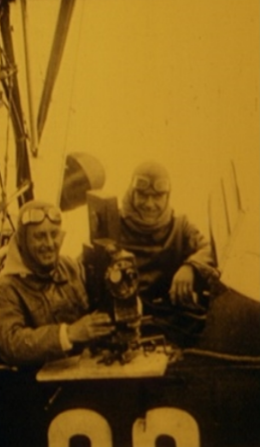
1914: A War of Images : Lies and Propaganda in the First World War (Macht der Bilder: Lüge und Propaganda im Ersten Weltkrieg) 2014
Distributed by Docuseek2
Produced by Katharina Mosser
Directed by Günter Kaindlstorfer
Streaming , color with b&w sequences, 45 min.
High School - General Adult
World War I, Propaganda, War, Documentaries
Date Entered: 10/02/2015
Reviewed by Susan J. Martin, Acquisitions Librarian, Texas Woman’s UniversityUsing generous amounts of film footage from the Austrian Film Archive in Laxenburg, Austria, award winning journalist and director Günter Kaindlstorfer takes a critical, but fascinating look at the propaganda films of World War I, concentrating specifically on the Central Powers.
From the onset of the war, Imperial Army Propaganda Chief Wilhelm Eisner-Buda understood that no other form of propaganda could influence the masses as effectively as film. Kaindlstorfer maintains that the Central Powers lost no time in spreading mass misinformation using the medium, both to aid in the recruitment of soldiers and to keep order on the home front. There were even mobile horse and wagon movie cinemas created to serve the troops, and it was during World War I that the weekly newsreel was created.
All propaganda distorts truth, and Kaindlstorfer frames his documentary by clearly identifying several lies commonly used in the films created by the Austria–Hungarian War Press Department and the German Film and Picture Office. As each clip is shown, virtually no effects of war are seen. There are no dead bodies, broken buildings, or starving masses. Men are happy, smiling and waving, and all is in good order.
Kaindlstorfer juxtaposes photographs taken during the war which underscores the reality that is left out by the films. This works very well, as does his use of the nine experts who provide commentary. This surprisingly large team for a 45 minute film has impressive credentials and includes the Director General of the Austrian State Archives, Wolfgang Maderthaner, the retired director of the Museum of Military History, Manfried Rauchensteiner, photo historian Anton Holzer, whose specialty is the war photography of World War I, and Nikolaus Wostry, the conservator of the Austrian Film Archive. These experts provide additional background, context and facts, along with a basic introduction to film techniques of the era. Kaindlstorfer allows them to teach the viewer what to critically examine the films and determine if the film is depicting reality or was staged.
Kaindlstorfer briefly touches on British propaganda, and the ideological differences in the two sides’ use of propaganda film. Using the classic 1916 British propaganda film, The Battle of the Somme (1916, 2008), Kaindlstorfer brilliantly contrasts the footage and title cards of this groundbreaking film with the one made in response by the Germans. Unlike the Central Powers’ films of the day, the British use real war footage and show the dead, dying, and the fatigue of war on its soldiers. We see the brutality of war. The contrast is stark and powerful.
Only one part of the documentary falls short; the ending summary attempts to connect World War I film propaganda with its use over time in other wars and conflicts. Kaindlstorfer made no previous attempt to create a larger comparison, and it comes across as hurried. It would have been better to summarize the aims of propaganda in general.
1914: A War of Images is highly recommended and is suited for audiences ranging from high school through adult. It would work well in history or film studies courses, and there are topics touched on only briefly which could be explored more fully with classroom discussion or a research papers. Günter Kaindlstorfer’s documentary provides a solid, much needed introduction to the topic.